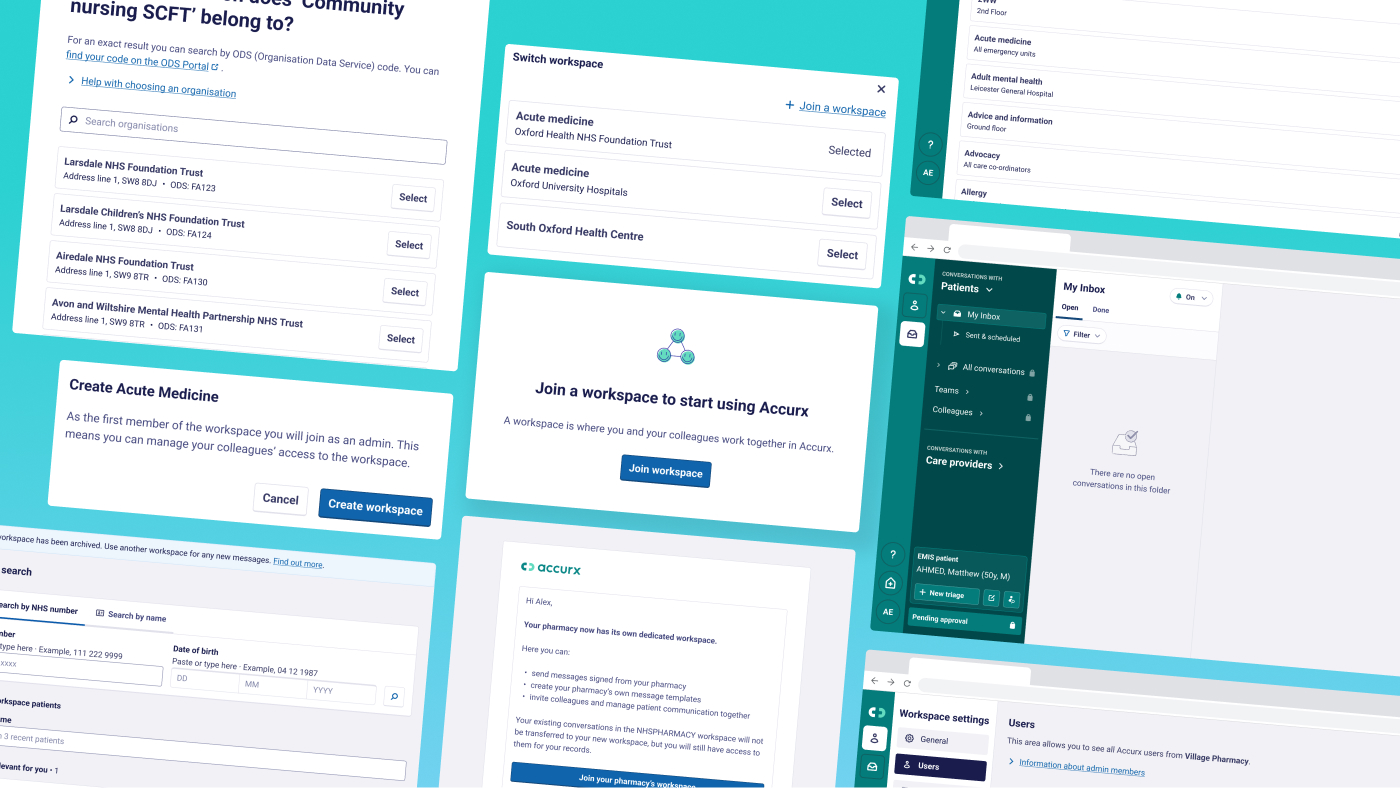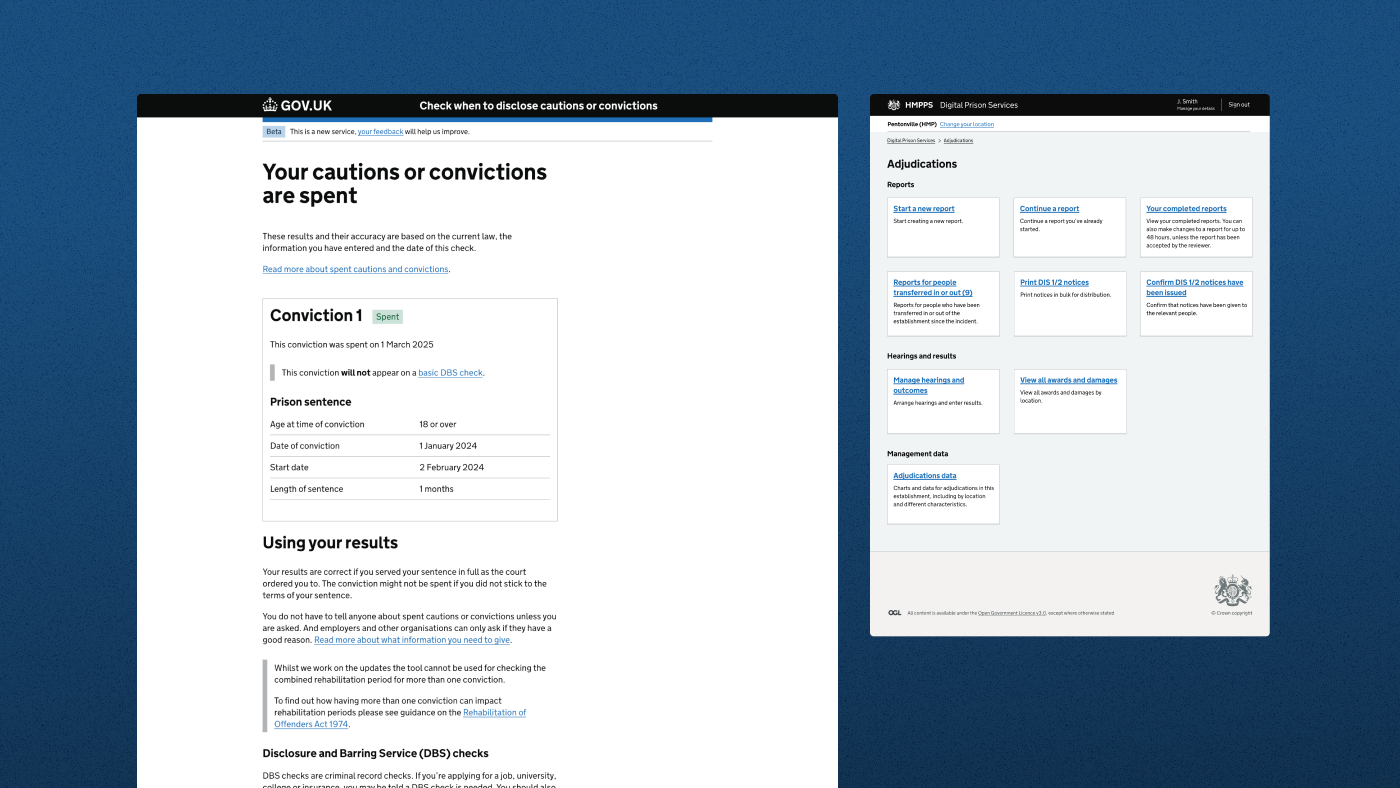Finding rehabilitative programmes
- Ministry of Justice
- Web app
Quick summary
The challenge here was to help probation practitioners find the right rehabilitation activities for a person in prison. For example, courses to address issues like substance abuse or managing relationships. I worked with a Service Designer to lead the team through a short design sprint and start the design phase.
My key outcomes:
- Worked with the existing team to analyse research and define the problems to be solved.
- Led ideation workshops and built the first prototype.
- Collaborated with a User Researcher to test the prototype, which received consistently positive feedback.
Taking the team from discovery to analysis and design
This design sprint included a review of discovery research, sessions defining scope, and ideation sessions. These helped to identify the key problems for the project:
- deciding which accredited programmes are suitable for a specific person's needs
- checking that the person's schedule in prison aligns with the programme's dates
- automating this process versus letting probation practitioners use their expert judgement

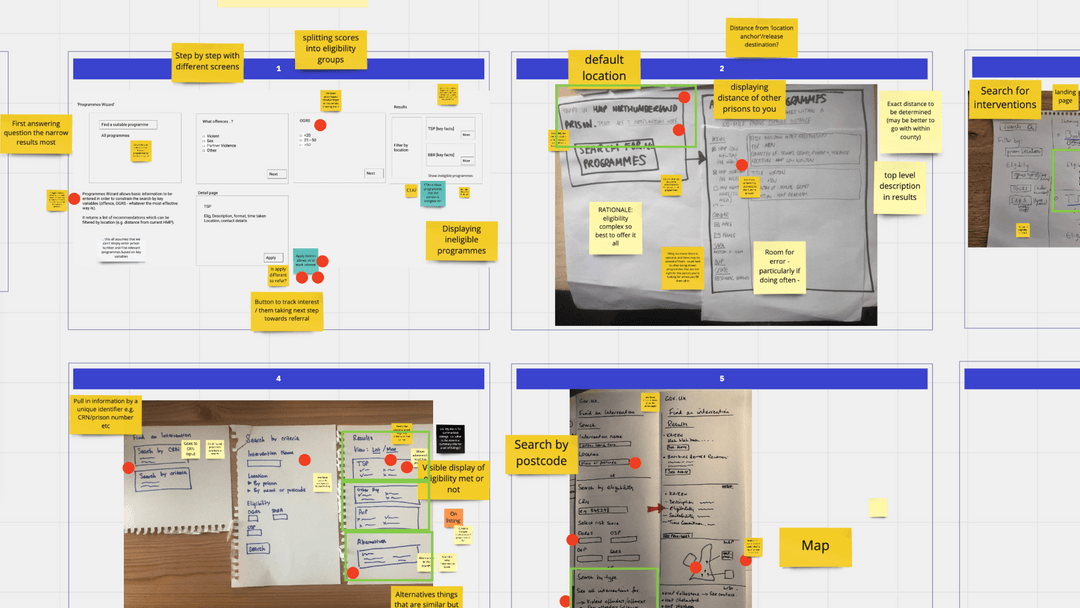
High-fidelity prototyping and user research
Taking the best ideas from the sprint, I built a prototype in Figma, which we tested with 7 probation practitioners and took through one round of iteration.
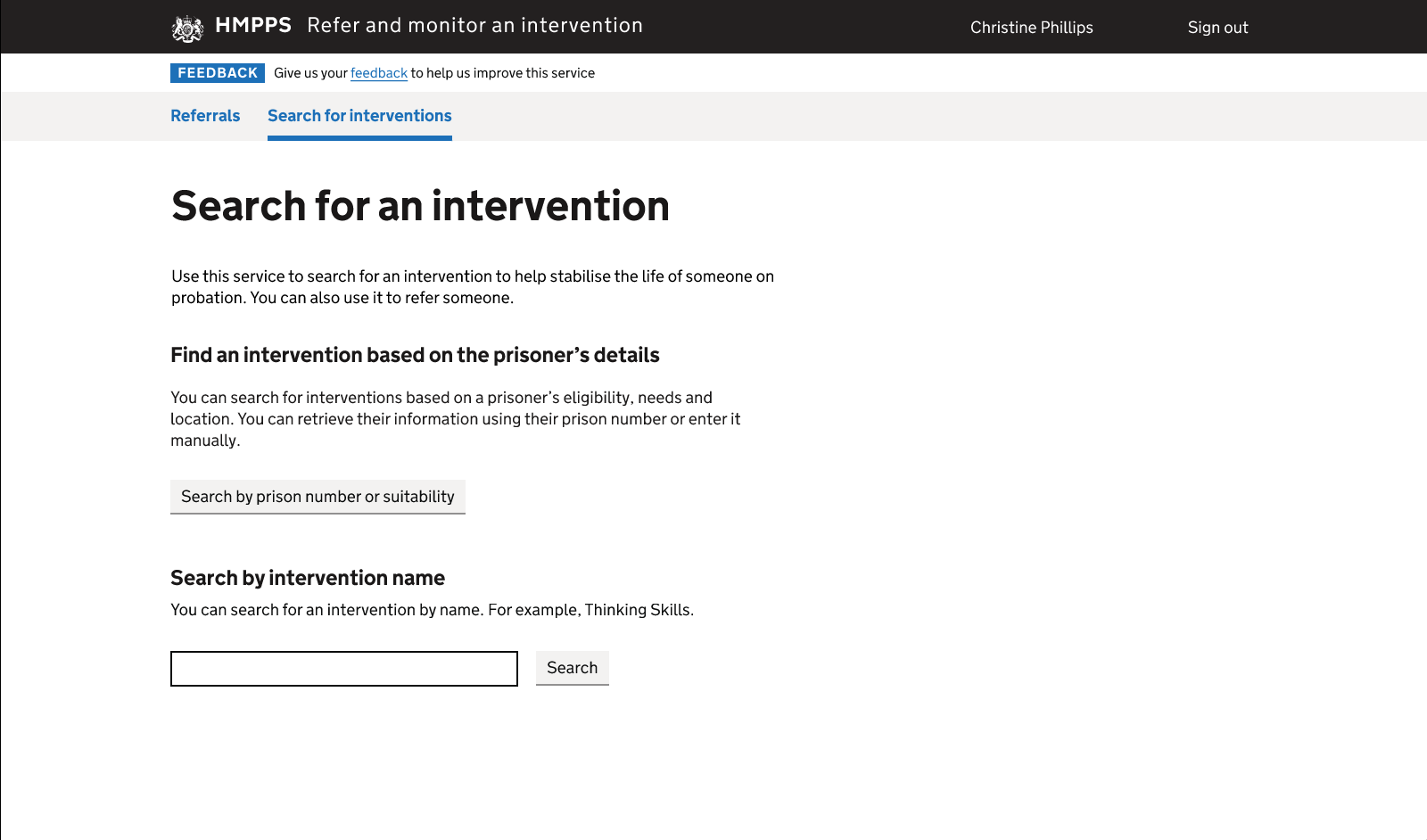

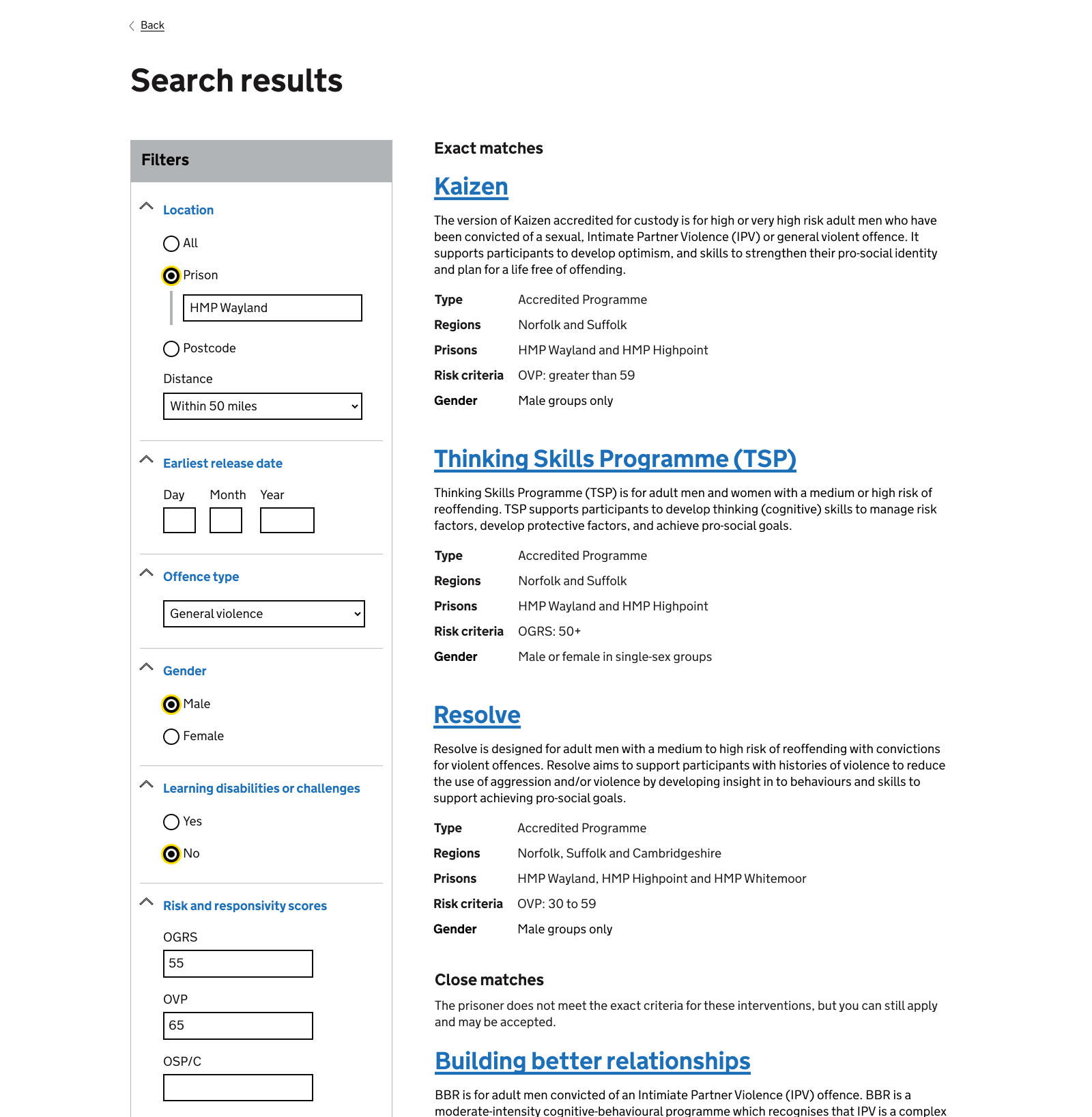
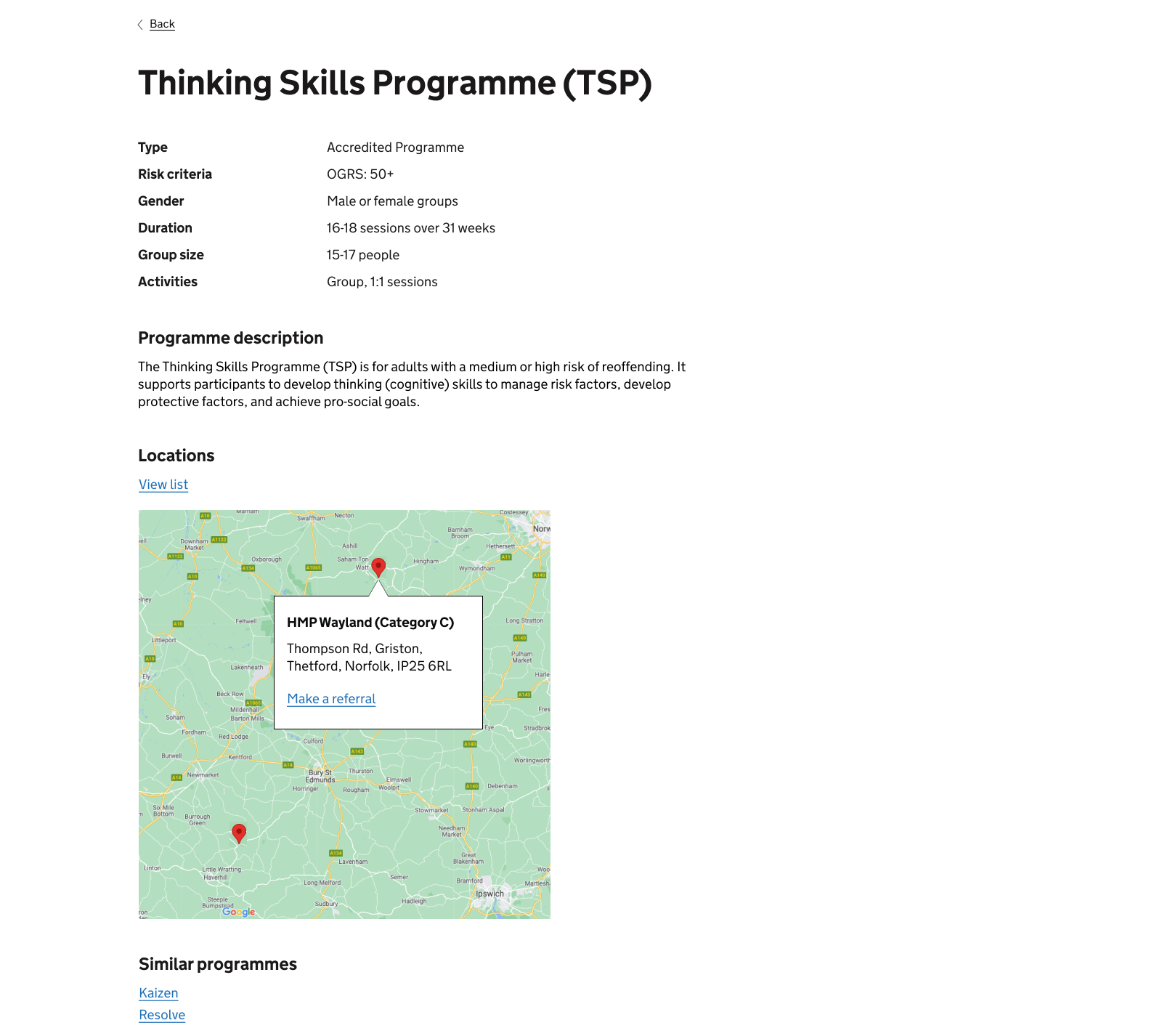
Next steps
The prototype received positive feedback from all user research participants, with relatively small tweaks for the next version.
I moved to another project soon afterwards, but this was a good example of using a short design sprint to take a team quickly from discovery to initial solution.
